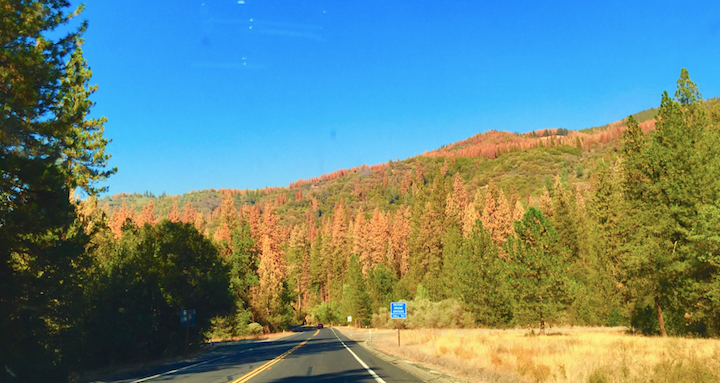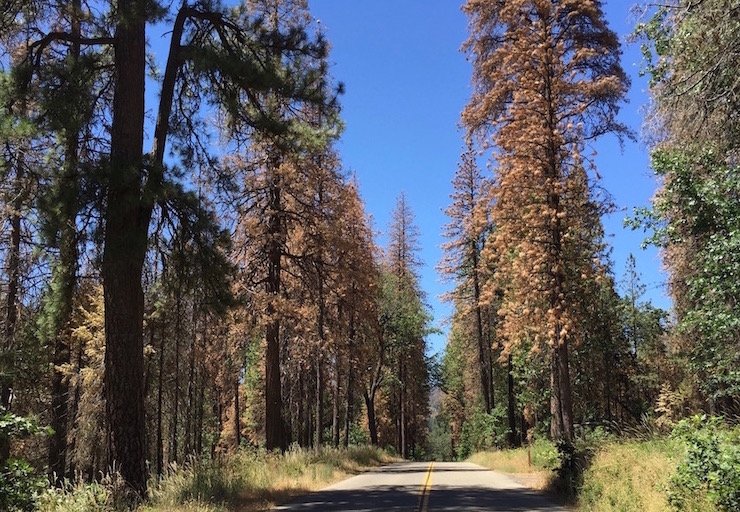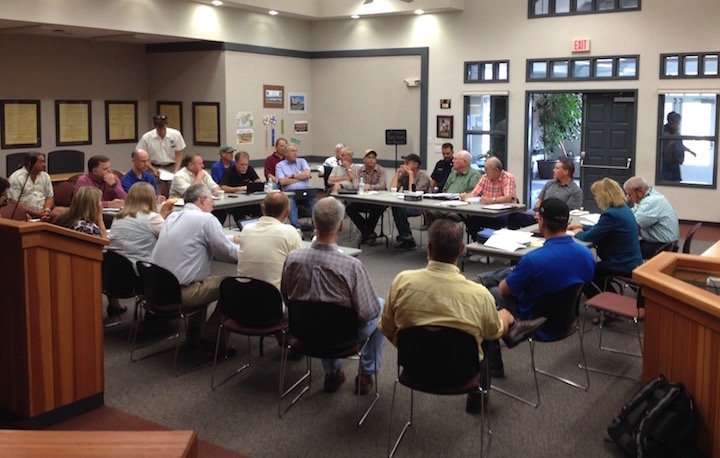My efforts to combat the Tree Mortality Crisis at the state and local levels as well as affordable home insurance in our fire-prone communities

As mentioned in my 2022 campaign announcement press release, soon after I took office the Tree Mortality Disaster struck with its epicenter in Mariposa and Eastern Madera Counties. I took action at both the State and local levels, forming a local Tree Mortality Working group and writing a resolution asking the Governor to declare a State of Emergency that was passed by Mariposa County Board of Supervisors as well as by neighboring Madera, Fresno and Tuolumne counties. Our then State Senator, Tom Berryhill, also used language I wrote to petition the Governor for help on this issue.
On October 30th, 2015, the Governor declared the emergency we requested. In November, he formed a state level Tree Mortality Task Force and the Governor’s office asked me to serve on that task force, which I did for 4 years, taking a leadership role on two committees and related subcommittees. The Tree Mortality Task Force is now known as the California Wildfire and Forest Resilience Task Force on which I still serve.
More recently, I was asked to testify before the Little Hoover Commission that was investigating the devastating situation with wildfires in California. I was introduced to the Commission by the then Executive Director of the Sierra Nevada Conservancy as the person most responsible for getting the Governor to declare the Tree Mortality Disaster. I am now working at the state level with Caltrans and Calfire on vegetation management along primary fire evacuation routes in our communities as a result of my work on a Roads Subgroup of the state Forest Health Task Force (which grew out of the Tree Mortality Task Force).

At the local level we decided to work on removing the dead trees from along our roadways and public infrastructure as, if they fall, they could block roads or cause property damage, serious injury or death. As mentioned in the press release, we were able to accomplish $5.4 million dollars in tree mitigation work in Mariposa County under the County’s partnership with Blue Ridge Services. The problem for us and other hard hit counties was that we knew we could claim 75% of the cost of the needed work under the California Disaster Assistance Act, but none of us could afford the required 25% in matching funds. So, working with state level agencies and the legislature, we were able to include a line item in the Governor’s budget for $6 Million that became the match for the ten hardest hit counties.
The Tree Mortality working group I formed locally has now become Mariposa County Fire Advisory Committee (MCFAC) and the working relationships established when I formed that group continue to support the county’s and our partner agencies' efforts to protect our citizens from wildfires.

In fact, it is those working relationships that illustrate something of which I am very proud – my ability to get a diverse group of people to work together for the common good. To address the tree mortality disaster locally, I pulled together representatives from Federal, State and County agencies along with with timber operators, nonprofits and private citizens to work on a common problem, dead trees and the fire and other hazards they represented. About 30 people attended each monthly local Tree Mortality Working Group meeting! The conversations and working relationships that developed in those meetings allowed participants to get to know each other and exchange information about available resources, priorities and challenges. This led to a mapping project so we could all see where the various projects were and how to coordinate those projects. Meetings of that group continued for about three years before transitioning into MCFAC.
During that time, I saw several local groups competing for forest health related grants. I helped pull some of these organizations together to apply for the Southern Sierra All-lands Recovery and Restoration Large Landscape Project that brought $2.3 million dollars to remove dead trees in our community. That was the first of 4 grants that now total $11 million dollars and include projects to protect Wawona and Yosemite West and the Mariposa and Tuolumne Groves of giant sequoia.
Although progress on wildfire risk insurance has been slow, I continue to search for solutions to the problem of cost and availability of fire insurance in our fire-prone communities. I met with Dave Jones, our previous Insurance Commissioner, many times and testified about the problem before the State Senate’s Insurance Committee.

I have also met with our current Insurance Commissioner Ricardo Lara, and worked with his office when he served in the State Senate to craft language to prevent the insurance companies from canceling insurance in several communities where there have been major fires. That legislation also imposed a requirement that insurance companies provide data that helps the Department of Insurance track what policies are being written in various parts of the state and at what cost.
One of the issues I focused on in my position as co-leader of the Insurance subgroup of the state Forest Health Task Force is the issue of standards for home hardening and vegetation removal. The problem is that insurance companies use fire ratings based on very low resolution satellite imagery and with those maps, a homeowner does not get credit for work they have done to protect their home from fire. We have moved the discussion from strictly vegetation removal to include home hardening as, in so many cases in recent California wildfires, houses burned because embers entered the house, not because of nearby vegetation catching fire. Keeping embers out of the attic or crawl space can make a big difference and is not that hard to do.
Calfire does their LE 100 inspections for vegetation, but insurance companies don’t use that information in determining whether to issue a policy or not. That is all too often based strictly on the zone you are in, no matter what you do. I therefore have been working with Calfire, the insurance industry and an insurance consumer advocacy group to develop fire prevention standards that Calfire and the industry could agree upon so that those of us who have done the work to harden our home and do appropriate vegetation management can get home insurance at an affordable price. It is a tough problem, but I believe that the insurance companies want to insure homes, especially those with low risk, and we all want insurance rates that reflect the work we have done to make our homes and property fire safe.
On this same issue, I am pleased to announce that the Insurance Commissioner Ricardo Lara has just proposed regulations to require insurance companies to consider wildfire risk mitigation factors done by homeowners in establishing their rating plans. I have been working on this issue for several years now and it is gratifying to see it potentially moving forward.
Please also read the Letter to the Editor from Amy Bach, Co-Founder and Executive Director of United Policy Holders about my efforts on the fire insurance issue.

